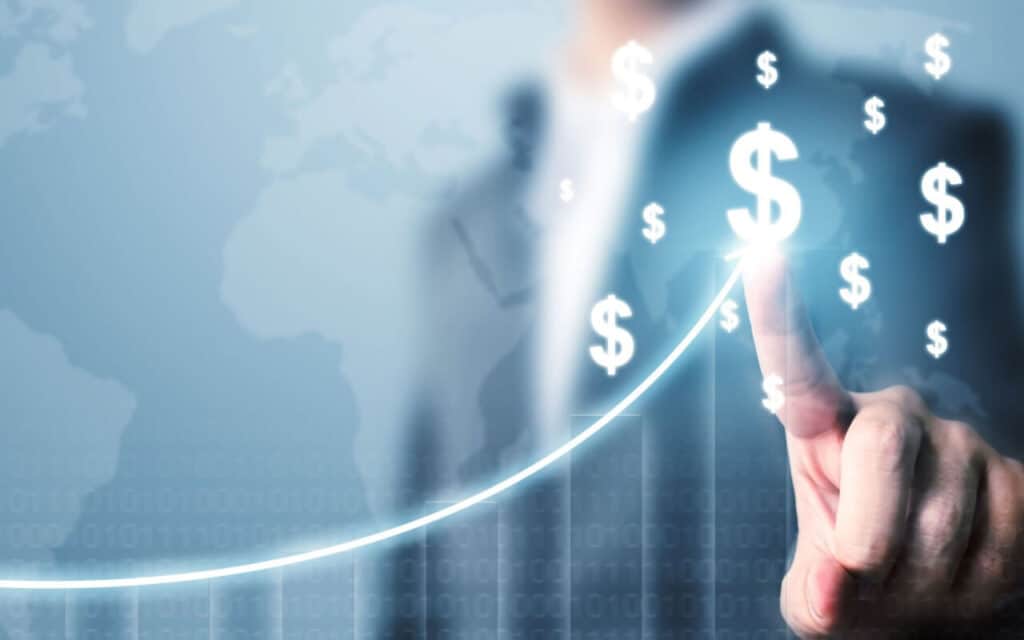- Jesel Silva
Featured in Construction Executive
The construction industry faces a major problem: Inflation is squeezing contractors and subcontractors. Overall inflation is causing the cost of everything to skyrocket, from food to fuel to office supplies and rent. Vital construction materials have seen some of the most volatile prices. Continued supply chain issues are still adding to the cost of materials. Overall economic uncertainty and fears of an upcoming recession are rising.
How these construction professionals address and resolve these challenges could be the difference between a bright future for their businesses or a continued rough road ahead.
INFLATION AND THE INDUSTRY
Rising materials and other costs, such as labor, fuel and maintenance costs, are simply crushing contractors and subcontractors. The pandemic devastated supply chains across the globe, the U.S. homebuilding boom swallowed up lumber, concrete and other essential materials as fast as they could be produced and now rising interest rates are further impacting construction budgets.
Contractors and subcontractors are caught in a vise of rising materials costs, a serious and growing skilled labor shortage and ongoing supply chain issues that drive up costs and delay projects. For instance, the price of steel, a major component of data center construction, fluctuated dramatically, rising over 200% from March 2020 to mid-2021 before finally easing this summer. Other critical inputs have also risen. In fact, the cost of key building materials has risen 19.2% year over year and 35.6% since the beginning of the pandemic. Thankfully, supply chain bottlenecks that plagued the industry have eased, and some prices have even fallen, but contractors and subcontractors continue to face severe materials cost challenges.
Another challenge is rising fuel costs. For a subcontractor with a small fleet of three Ford F-150s, at $3.70 a gallon (the current national average), simply filling up those vehicles twice a week could lead to over $2,000 a month in out-of-pocket costs. In key markets in California, the Pacific Northwest and across the eastern seaboard, those costs are as much as 35% higher. Increasing diesel prices are an even greater concern. In early 2022, diesel costs rose 33% in just five weeks, driving the price to an all-time high of $5.78 per gallon in June. According to EIA, diesel prices have jumped 141% since the pandemic began.
The cost of construction materials is about 35% to 60% of the overall construction cost. For the last three years, record inflation has driven up the cost of construction projects while also creating new risk management challenges for contractors. The construction industry weathered the pandemic economic slowdown better than most industries, but significant barriers to success remain.
Contractors and subcontractors must purchase materials in advance of a project before they are paid. In most cases, they must pay for those materials within 30 days to 60 days of purchase, long before they are paid for their work. As costs rise, the holes in the budget get wider and wider. This jeopardizes the ability to bid on and win more contracts as the necessary cash flow simply isn’t available to float a new project.
While the $1.2 trillion bipartisan infrastructure plan signed into law last year has been hailed as a savior for the industry, it also creates additional problems. Funding for major new projects is increasing demand for scarce construction materials but does little to increase the supply of those materials, adding further inflationary pressure. As we all learned in high school economics, adding more dollars to chase too few goods leads to … greater inflation. It is a boon to the industry to know there will be a steady supply of funding for projects, but without real action to lower material and energy prices, costs will continue to rise and contractors and subs will continue to see narrower margins. In the end, ever-higher costs harm the bottom line, limit a project’s upside rate of return and are encouraging owners to delay the start of construction or cancel proposed jobs entirely.
CONSTRUCTION MANAGEMENT TECHNOLOGY CAN HELP MITIGATE INFLATION IMPACT
Experts do not believe rising inflation and uncertainty will lessen over the next year. So how are contractors and subcontractors supposed to bid on and secure their next project while materials prices remain volatile and could easily cause a project to become unprofitable?
The first thing construction professionals must do is focus on solving what is within their control. Thankfully, innovative, simple-to-use preconstruction technology can provide greater control and productivity. These platforms improve planning, increase efficiency and help general contractors, subcontractors and suppliers collaborate more easily to establish long-lasting connections that enhance stability and success.
Preconstruction, the first phase of any project, is used to create strategic project plans, including design plans, check vendor qualification, establish communication with owners and source not only the needed materials but the labor to see the project through to completion. The most impactful digital tools tie all preconstruction information in one place, bringing contractors, subcontractors and suppliers together to share information, improve collaboration and reduce the time it takes on traditional processes.
According to a recent study, the construction industry is finally making implementation technology a priority. Over one-third of specialty contractors plan to increase investment in construction technology to streamline functions and improve productivity.
Unfortunately, construction remains a relatively change-averse, “old school” industry, with 39% of specialty contractors reporting they still primarily use spreadsheets, whiteboards, paper-based processes, or other methods instead of construction tech platforms, with concrete contractors particularly lagging. And a PlanHub September 2020 survey of over 300 subcontractors found that 50% build their take-offs manually or offline.
The right construction planning and management solutions digitize all the information and paper contractors and subcontractors use most often. Instead of combing through old bidding documents, spreadsheets and Post-It notes, software solutions provide quick and easy document replication, streamline bidding and other critical processes and saving precious time and money.
For example, digitizing estimating and materials takeoff tasks reduces the amount of time needed to complete proposals. The increased accuracy also reduces the chances of cost overages and makes for easier cash flow.
The technology is particularly helpful in the crucial bidding process. Easy access to documents and data helps create more detailed, accurate and speedier bids. The right applications also notify construction professionals about new projects in their service area and can help them place their bids ahead of the competitors and gain an advantage.
Of course, there is far more to an effective bid than speed or offering the lowest bid. Contractors and subcontractors need to build trust with project developers and showcase the attributes that make them a better fit than their competition. Integrated construction platforms allow construction professionals to complete extensive profiles of their businesses. They can create and save data illustrating their success, such as the completion of previous projects, safety records, licenses and much more. This provides potential clients with the full scope of the company’s true value and ability.
The digital revolution can help contractors and subcontractors maximize efficiencies, save money and mitigate rising inflation. By using innovative construction planning and management technology now, construction professionals can improve critical business functions, strengthen collaboration and be bettered prepared for the challenges ahead.
Written by Ro Bhatia CEO of PlanHub, the leading cloud-based preconstruction platform that enables general contractors, subcontractors, and suppliers to connect and collaborate on construction projects across the US. PlanHub was created by contractors, for contractors, to simplify the construction bidding process.



